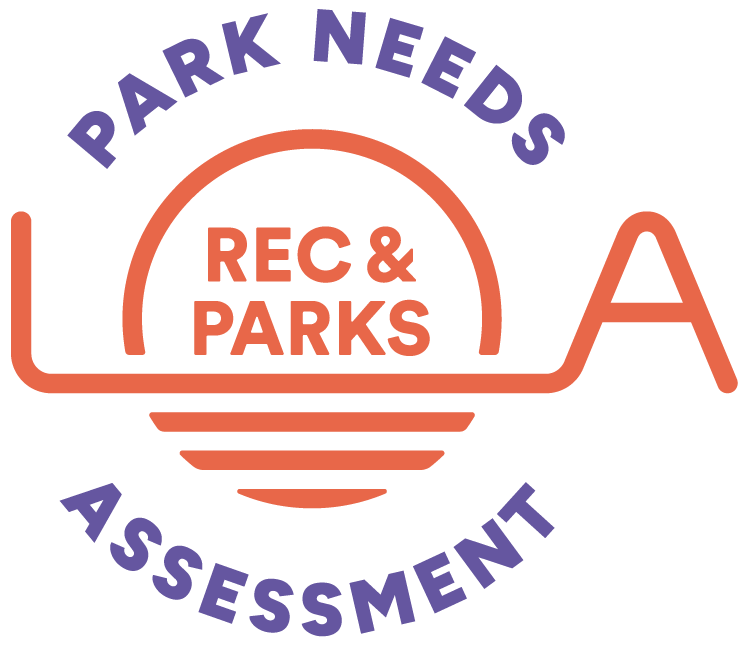Ensure appropriate shade, seating, and other universal elements throughout all zones.
Shade from trees or structures creates a more comfortable and safe environment. As Los Angeles faces more and more extreme heat days, shade coverage and other cooling methods in parks will need to evolve and expand. Trees reduce the impacts of urban heat island on hot days, while also sequestering carbon and helping to reduce soil erosion through their root systems. Shade structures should be used in places where trees are limited and where trees conflict with the particular park use.
Abundant and varied seating that allows people of all ages and abilities to comfortably inhabit public spaces should be a priority. Seating near recreational or programmed areas is important, particularly for older caregivers. Identity features help tie a park or recreation facility to the neighborhood it is in, reflect a community’s uniqueness, and become a signature for the facility. Public art, sculptures, decorative arches, or water fountains are examples of identity features that may attract users and serve as landmarks for meeting people or giving directions.
Follow local stormwater and flood control requirements for effective on-site stormwater controls. Low Impact Development (LID) Best Management Practices (BMPs) are required when 500 square feet or more of impervious surfaces within parks such as sidewalks, parking lots, and buildings are added or replaced. Additional flood mitigation controls may be required in certain locations.
Drainage, water quality, and flood management should be discussed early in the design process to improve local drainage and downstream water quality, as well as ease of access and maintenance. Considerations could include the footprint of required LID BMPs with overall park design, cost effective drainage design, and peak flood flow management features.
